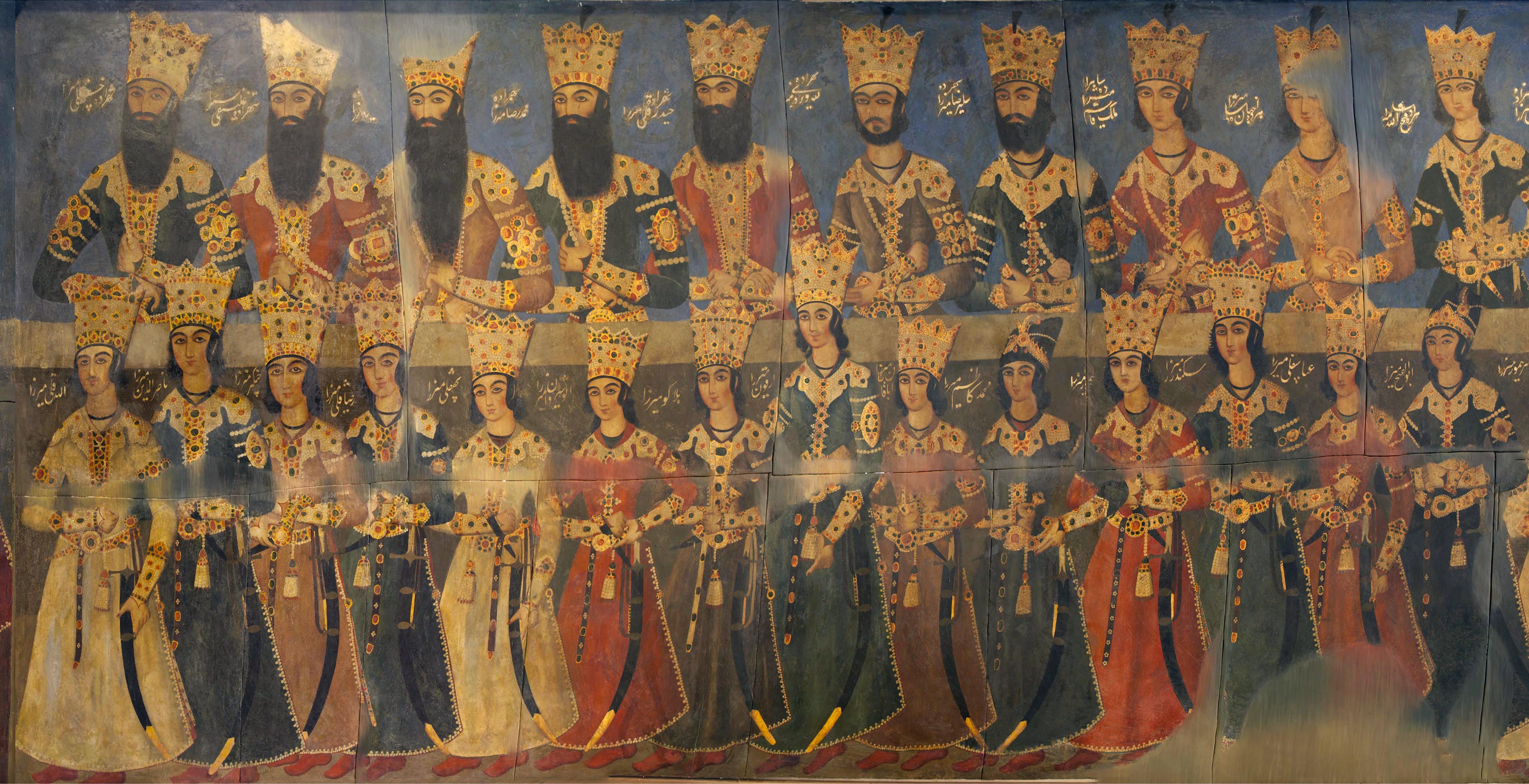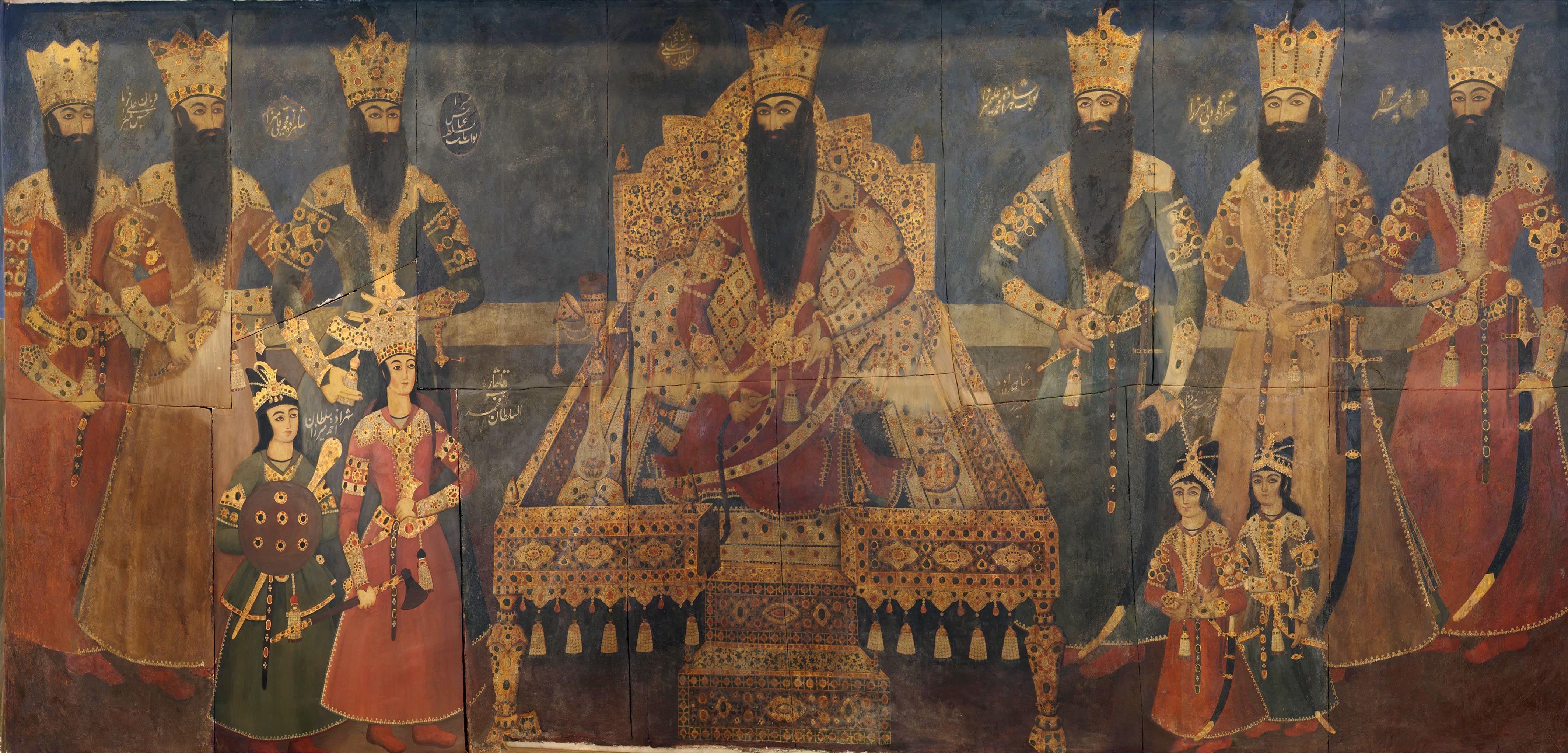Saf Salam Fathali Shahi Hall
Saf Salam Fathali Shahi's painting
The palace or Negarestan Garden was built between 1222-1228 AH (1807-1813 AD) by the order of Fathali Shah Qajar, with the aim of creating a summer-government center outside the Dar-ol-Khelafeh (Capital) of Tehran. Due to the existence of numerous paintings and drawings of Fathali Shah and his courtiers in various buildings, this garden became known as Negarestan. With the change of use of Bagh Negarestan during the Reza Shah period, a large part of the Qajar mansions along with the wall paintings of Fathali Shah were destroyed.
One of the paintings similar to the old and destroyed paintings of Negarestan Palace is the work of Saf Salam Fathali Shahi, which is the mural painting of the Royal Assembly of Qom Diwani Mansion. This work is one of the best and most valuable examples of "Saf Salam" painting of the Qajar era. With the development of Balaser Mosque near Masoumeh (S.) shrine in Qom between 1971 and 1996, Diwani mansion was destroyed, and these paintings were separated from the wall and moved to Tehran. Based on historical studies and artistic styles, this painting was probably painted in 1248 A.H. (1833 AD) by the painter Mirza Mohammad Ali and by the order of Keykavous Mirza (the 28th son of Fathali Shah and the ruler of Qom at the time).
Features of painting
This wall painting, which was drawn with paint and oil technique on a plaster bed, contains 54 pieces and has a large size of about 20 × 2.5 meters. According to the available documents, the number of people who were present in this painting was 150 people, while removing the work from the wall, a part of the painting was destroyed, and today there is a part left where 90 people can be seen. This valuable wall painting is very evocative by showing the central role, the luxurious clothes and the dazzling decorations of the king (the armbands of Masra from the Mountain of Light and the Sea of Light) and his sitting on the famous peacock throne, along with the long line of his good-looking children and grandchildren well induces glory and the power of the Qajar ruler and the greatness of his kingdom and family.
Historical and political aspect
But the importance of this work, apart from its artistic technique and magnificent dimensions, is its historical and political aspect, because it depicts all the children and grandchildren of Fathali Shah, at the time when each of the different tribes and ethnicities of Iran held political and governmental positions with similar images, special clothing, mentioning name and according to age, position and lineage.
The rarest motif of the Qajar era
The Saf Salam mural by Fathali Shah is one of the rarest and most valuable paintings of the Qajar era, which was given a new life with the great efforts of Tehran University and with the cooperation of restorers and researchers and was displayed on the 4th of March 2017 at the place of the cultural and historical collection of the Negarestan Garden Museum and has been registered as a national work of Iran with the number 765.



